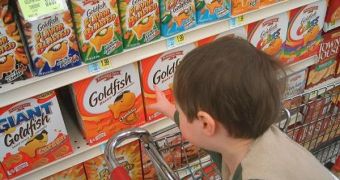Economy experts draw attention to the fact that parents who carry their small children to shopping malls with them are very likely to purchase more than they have planned to, as they fall under the “influence” of the little ones, who always ask for something else. This fact, they say, should be remembered by both parents and shop managers. The latter have already started employing strategies to attract the kids into buying more stuff, by placing colored products on the lower shelves, at their eye levels.
According to an investigation led by University of Vienna researchers from Austria, parents buy twice more stuff than they think when carrying their children with them. The method of observation for this research has been fairly simple. Parents accompanied by their little ones were watched attentively from a distance by the researchers, which then approached the adults and interviewed them.
The results, published in a recent edition of the Journal of Retailing and Consumer Services, showed that most of the adults could only remember buying half the stuff they actually did while being observed. Some 178 people had been watched in some of Vienna's largest shopping malls. “Most parents seem to be completely unaware of how much their little ones make them buy,” consumer researcher Claus Ebster, from the University of Vienna, says.
“Considering that the majority of purchase decisions in a supermarket are made in the store, neither retailers nor parents should underestimate the importance of child-induced purchase decisions,” UV professor of business administration Udo Wagner, who has worked together with Ebster on the study, adds.
He pinpoints that the largest amounts of products parents don't know they're buying are selected by their children from the lower shelves, where store managers strategically place sweets and small toys, for kids to choose from. The only solution that the researchers see to this problem is to place the youngster in the shopping cart, facing the parent, so that his or her field of view be diminished.
“Children seated in a stroller are also less likely to bug their parents with purchase requests,” Ebster stresses. But some adults buy things such as small toys for their young ones precisely to keep them occupied during the rest of the trip through the mall.

 14 DAY TRIAL //
14 DAY TRIAL //